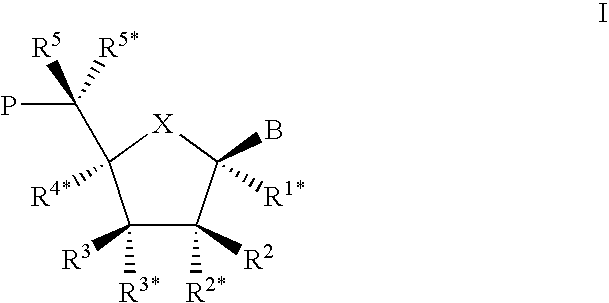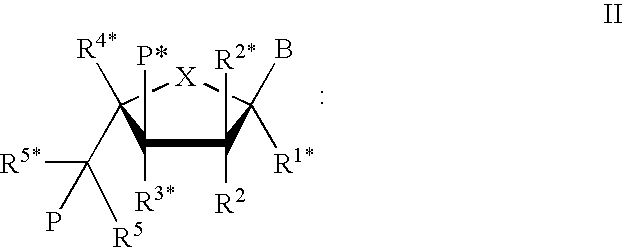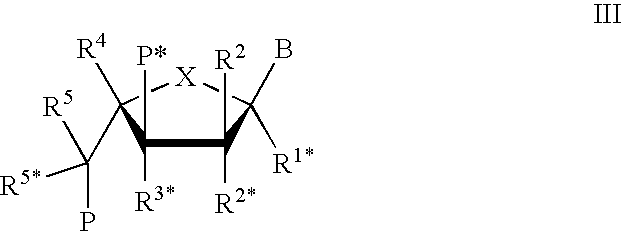Methods and systems for detection and isolation of a nucleotide sequence
- Summary
- Abstract
- Description
- Claims
- Application Information
AI Technical Summary
Problems solved by technology
Method used
Image
Examples
example 1
Recovery Assay of In Vitro mRNA Captured by Oligo-T Capture Probes
[0204] LNA oligo-T capture probes were used to investigate the efficiency of poly(A).sup.+RNA selection. Biotinylated oligo-T capture probes attached to streptavidin-coated magnetic particles captured a defined amount of in vitro synthesized polyadenylated mRNAs from the yeast Saccharomyces cerevisiae under various hybridization conditions. After several stringency washes the selected mRNA was eluted from the beads. The recovery per cents were calculated from gel electrophoresed fragments.
[0205] Experimental
[0206] Pre-blocking of Streptavidin-coated magnetic particles. 60 .mu.L of Streptavidin-coated magnetic particles (Roche Cat no. 1 641 778 or 1 641 786) were pipetted into an Eppendorf tube for each sample. The magnetic separator was used to remove the supernatant. 100 .mu.L 1 .mu.g / mL yeast RNA (Ambion cat no. 7120G) diluted in TE (10 mM Tris-HCl, 1 mM EDTA, pH 7.5) was added to pre-block the magnetic particles fo...
example 2
Use of LNA Oligo-T Probes to Improve Purification of mRNA
[0210] LNA oligonucleotide as oligo-T capture probes to improve the purification of polyadenylated RNA. Melting experiments were performed in solution and "on-chip" (the oligo-T capture probes bound to a solid surface). The biotinylated oligo-T capture probes were attached to streptavidin-coated magnetic particles and used for purification of poly(A).sup.+RNA.
[0211] Melting experiments in solution. The melting of the duplexes either LNA / DNA or DNA / DNA (control) were studied measuring absorbance (A=260) as a function of temperature from 10.degree. C. to 90.degree. C. with an increase of 1.degree. C. / min in a Perkin-Elmer .lambda.-40 spectrophotometer equipped with a Peltier element controlling the temperature. Hybridization mixtures of 500 .mu.L were prepared in 10 mM sodium phosphate buffer pH 7.0 100 mM NaCl, 0.1 mM EDTA containing equimolar (1 .mu.M) amounts of the different LNA or DNA oligonucleotides and the complementary ...
example 3
Melting Experiments "On-Chip"
[0212] Capture probe melting profiles have been performed with a microscope equipped with a peltier-controlled heating stage it has been shown possible to investigate fluorescent signals from microarrays during specific changes in temperature. Melting properties of different surface attached probes and their targets can this way be revealed (FIG. 5).
[0213] Euray.TM. polymer slides were coated with 20 .mu.g / mL streptavidin, Prozyme, (cat no. PZSA20) in phosphate saline buffer (PBS, pH 7, 0.15 M Na.sup.+) for 22 hours at 4.degree. C. in a humidity chamber. The slides were washed three times in PBS and briefly in demineralized water and dried for 5 min. The slides were spotted using 10 .mu.M of LNA or DNA oligonucleotides (table 1, table 2). The array setup: biotinylated oligonucleotides were spotted in duplicate and three times 300 .mu.L per spot with a distance of 300 .mu.m between spots. he slides were incubated O / N at 4.degree. C. in a humidity chamber ...
PUM
| Property | Measurement | Unit |
|---|---|---|
| Angle | aaaaa | aaaaa |
| Angle | aaaaa | aaaaa |
| Angle | aaaaa | aaaaa |
Abstract
Description
Claims
Application Information
 Login to View More
Login to View More - R&D
- Intellectual Property
- Life Sciences
- Materials
- Tech Scout
- Unparalleled Data Quality
- Higher Quality Content
- 60% Fewer Hallucinations
Browse by: Latest US Patents, China's latest patents, Technical Efficacy Thesaurus, Application Domain, Technology Topic, Popular Technical Reports.
© 2025 PatSnap. All rights reserved.Legal|Privacy policy|Modern Slavery Act Transparency Statement|Sitemap|About US| Contact US: help@patsnap.com



